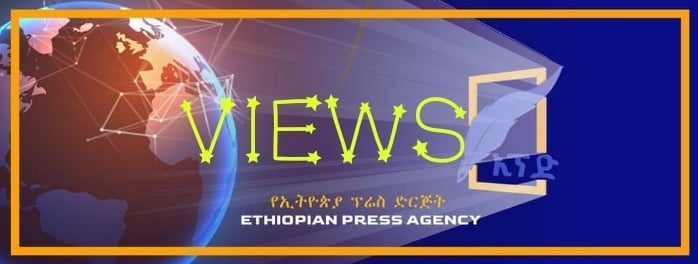
BY GETACHEW MINAS
The Ethiopian and African-American bondage has been strongly welded together by the struggle for liberty. The Ethiopians had fought against fascism and African-Americans against White supremacy just to regain and maintain their basic human rights and independence. Ethiopian and African-American histories are, therefore, interweaved and intertwined.
These historical ties have been tested time and again and proved to be stronger. Ethiopians have collaborated with African-Americans every time they demonstrated against racism and infringement of their rights. This is a reflection of the history of resistance against fascism and supremacy. Thus, the recent Black Lives Matter (BLM) movement in the USA has reverberated strongly among freedom loving Ethiopians.
As Z. Zelalem pointed out that there is a strong link between the history of African-American resistance and the history of African anti-colonial effort in struggling against the “Scramble for Africa.” The leaders of Black liberation movement took inspiration from the resilience of Ethiopia that successfully defended itself against a military aggression from colonial Italy.
The country, known then as Abyssinia, won international recognition of its territorial sovereignty after it defeated Italy in the Battle of Adwa in 1896. That battle culminated, ending a war which the New York Times at the time referred to as one of the most “disastrous” in which the Italian arms have ever taken part. Ethiopian forces chased the invaders on the mountains of Adwa.
The striking defeat caused tremors around the globe especially for those Western powers that considered Africans little more than slave labor. They thought that the Africans were only instruments of the colonial powers, or “undisciplined savages” as defeated Italian general O. Baratieri had labeled them. The events of the Battle of Adwa had an impact far beyond Ethiopia. The Ethiopian flag became the collective banner for pan-Africanism. It endured as a uniting icon for the pioneers of African struggle.
Several newly independent African states adopted the colors (green, yellow and red) of Ethiopian flag as part of their national flags. Thus, the Battle of Adwa set the ideological path towards the liberation of Africa. This liberation posture of Africa strongly influenced African-Americans who had been subjugated by Jim Crow laws and “institutional white supremacy.” The genesis of this law is presented below.
Black nationalists were inspired by the struggle of Ethiopia against European colonialists. They were closely associated with the Ethiopian leaders and heroes who beat the occupying force of fascism. As revealed by Z. Zelalem, the Universal Negro Improvement Association, a leading pan-African organization, named its official organizational anthem “Ethiopia, Thou Land of Our Fathers.” Josiah Ford, a renowned musician and resident of Harlem who wrote this anthem took up the offer to migrate to Ethiopia. Generally, African-Americans rallied in support of Ethiopia when forty years later, news of an impending second Italian invasion first echoed. Warmongering by Benito Mussolini heightened tensions between Harlem’s Black and Italian communities.
Intense wrath: News of atrocities including the indiscriminate bombing campaign by the Italian Air Force provoked an intense fury among African-Americans. Boycott of Italian products, among other efforts, was launched. Protests were organized. Newspapers owned by African- Americans, such as the Negro Liberator, exposed atrocities committed by the Fascist in Ethiopia and they reported extensively on demonstrations in support of Ethiopia. It was revealed that The New York Times with the headline “Mob of 400 Battles the Police in Harlem; Italian stores raided, man shot in crowd” used choice words like “mob” to describe pro-Ethiopia protesters. Actually, it was not a mob, but a demonstration of resistance.
A campaign was conducted by Black-Americans to recruit volunteers in support of Ethiopian resistance. It was reported that it attracted thousands of volunteers, including at least 1,500 from Harlem alone. Another 600 were recruited from Texas, according to newspaper clippings from the era. Finally, the US State Department “prevented” anyone from traveling; it prohibited participation of its citizens in foreign wars. Despite the prohibition, a few did, including renowned aviator John Robinson, who took charge of the inexperienced Ethiopian Air Force. He was a member of the Brown Condor Air Force squadron in the US. He fought in Ethiopia against Fascist Italian occupation forces in 1935.
Death toll from the Italian invasion and occupation in1935-1941 was estimated to be half a million Ethiopians, mostly innocent civilians. Ethiopia had no shortage of supporters in the US, who played a significant role in voicing the plight of Mussolini’s victims in Ethiopia. In recognition of this support, Emperor Haile Selassie visited Harlem in 1954 to thank its residents. It is reported that an estimated 200,000 persons lined the streets to give the Monarch a warm welcome during his first visit to Harlem. The Emperor presented to the church a golden cross made in Ethiopia. He was given an oil portrait of himself by Ivan Tate, African-American artist.
Renowned Ethiopian historian Bahru Zewdie explained to Quartz Africa that during his visit, the Emperor donated an Ethiopian Orthodox Cross a relic from his own church, to the Abyssinian Church of Harlem, which itself has a unique history that further intertwines the peoples of both countries. The Abyssinian Church of Harlem was founded by Ethiopian sailors and African- Americans who refused to attend the segregated churches of the era. So they founded their own independent church. It was pointed out that Ethiopia has largely “failed” to cultivate and nurture this history for its future generations. Unfortunately, regime changes in Ethiopia would usher in leaders who sought above all to “erase” all positive contributions of their predecessors from collective memory.
Jim Crow: JC is a racist depiction of an African-American that conventionally dresses in rags and wears shabby hat and shoes. One story claims JC is an “emulation” of a black slave. An elderly and deformed slave working in the stable yard often performed a song and dance that he had improvised for his own amusement. The stable was owned by a white man named Crow, whose name the elderly slave adopted. The Park Theatre in New York introduced a Jim Crow act, impersonating a black slave. The “Jim Crow” segregation laws revived to celebrate the Ku Klux Klan (KKK), an American white supremacist terrorist hate group whose primary targets are African-Americans. The KKK painted all black people as rapists and animals. The segregation laws were issued targeting black people. Ida B. Wells, a well-known black Republican journalist, fought bitterly against this. The JC character popularized the perception of African-Americans as lazy, untrustworthy, dumb, and unworthy of integration.
White dramatists and performers imitated blackface while touring around the US spreading racist overtones and ideas, “instilling” in the minds of white Americans “negative” view of African-Americans in both their character and work ethic. In the 1960s when the struggle for Civil Rights in the USA gained attention at home and abroad, President Lyndon Johnson signed the Civil Rights Act of 1964 that prohibits discrimination on the basis of race, color, religion, sex or national origin. This act forbade discrimination on the basis of sex and race in hiring, promoting and firing. Though the Act is a step in the right direction, its implementation depended on the will of the Whiteman, who is skilled in camouflaging discriminatory acts. The victims of discrimination find it hard to expose vicious acts that negatively affect their lives. It is difficult, for example, if the act of hiring and promoting of skilled workers is done without reference to race, color, sex or religion. As black people, Ethiopians also suffer from the same heinous act of discrimination. Other colored people may also suffer from the same treatment.
Intimate links: Considering the intimate historical links between Ethiopia and the African-American community, Ethiopians fully nurture and support the precious brotherhood. The African-American brothers and sisters are encouraged to achieve the equality and dignity that they so richly deserve. The African-Americans are still subjected to sudden attacks on their properties, bodies and lives by the ferocious cruelty of the police. The police seem to be licensed to kill any black person with impunity for any imaginable suspicions of crimes. Black parents, particularly mothers, are occasionally exposed to shocks upon seeing the dead bodies of their sons, innocent or not. Similarly, Ethiopians are facing the same social problems, in their homes or in the workplace.
Highly qualified African-Americans are not given their due respect for their skills and proficiency. Ethiopians are also subjected to the same treatment. Both of them are assigned to low grade jobs that require the least qualifications. To mystify such denigration and vilification, a few of the highly qualified black persons, including Ethiopians, are assigned to high posts in public offices in the US. But, this is only veiling and shrouding the obvious contempt of the Whiteman toward the colored people who labor cheaply in degraded and maligned jobs and professions. What is more, despite the despoiled and degraded jobs, the pay is insufficient that results in poor incomes or pensions in the long run or at old age.
The ghetto life style is carefully designed by those in power to segregate the Black people from participating in the development of their country. Born in the reserve area, the ghetto, Black people are condemned to remain uneducated or unskilled to participate in the modernity of the country they had built in the past with their hard labor. They are psychologically made to adjust to dependency on state handouts, whenever unemployed. They are accustomed to donations of food aid and pay to run their lives without worries. But, this leads to total dependency, which depresses the stamina, endurance and determination to wake up to the material realities around. However, they are not made exposed to starvation.
Ethiopians are expected to undergo the same chorus of daily life as the Black people. A few Ethiopians manage to go to school and achieve a kind of proficiency in some skills as their Black colleagues do in limited number. Both of them arestrictly observed at home or in the workplace by means of electronic gadgets. They are not expected to jump a hidden or imagined redline beyond which they are not allowed to move freely without being scrutinized. They are made to feel free to do whatever they wished, but that is only on paper. It is very true that in some cases they are trained to do their jobs with near perfection and are paid accordingly. But, they are all subjected to live on loans from banks and other financial institutions, spending all their lives settling one debt after another. Ethiopians and African-Americans live in such a vicious cycle of debts. In these malicious situations, they still value their close “bondage” as Black people from Africa.
Editor’s Note: The views entertained in this article do not necessarily reflect the stance of The Ethiopian Herald
The Ethiopian Herald July 30/2021



